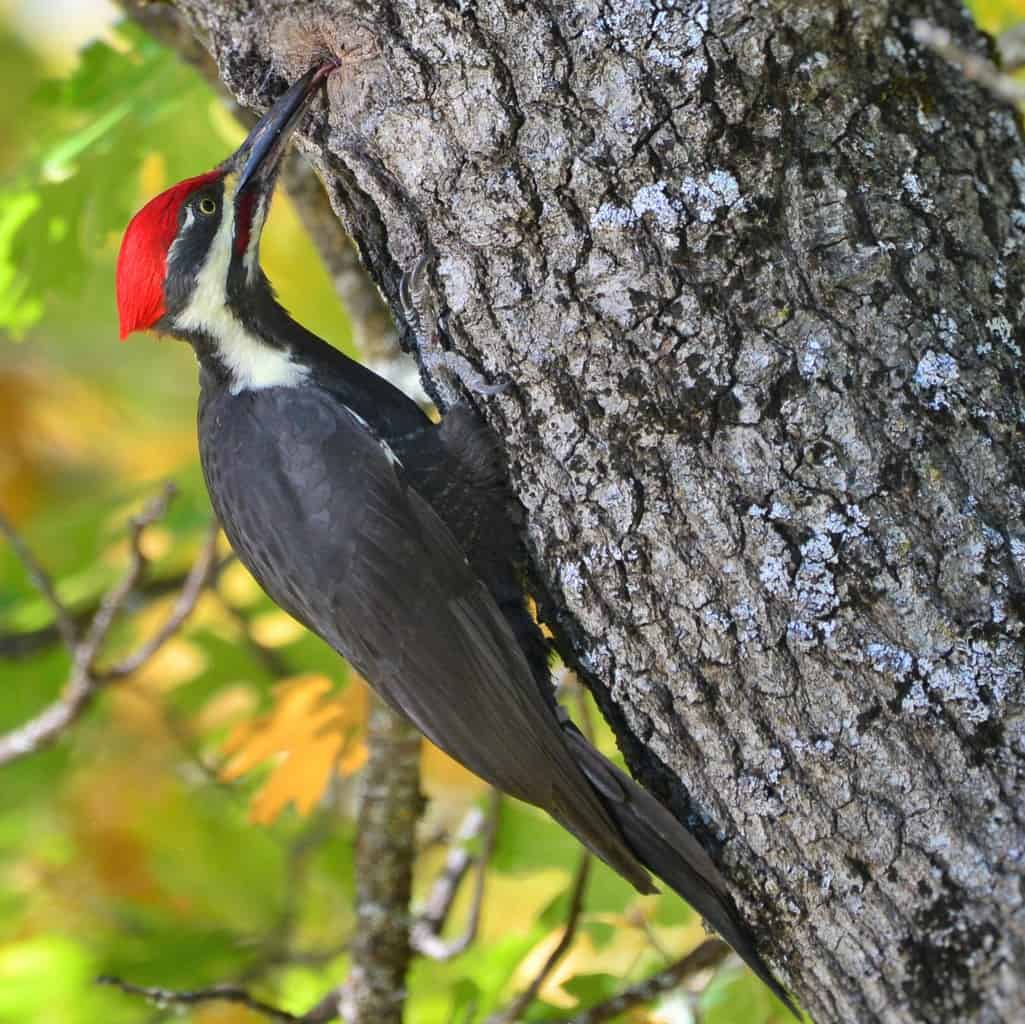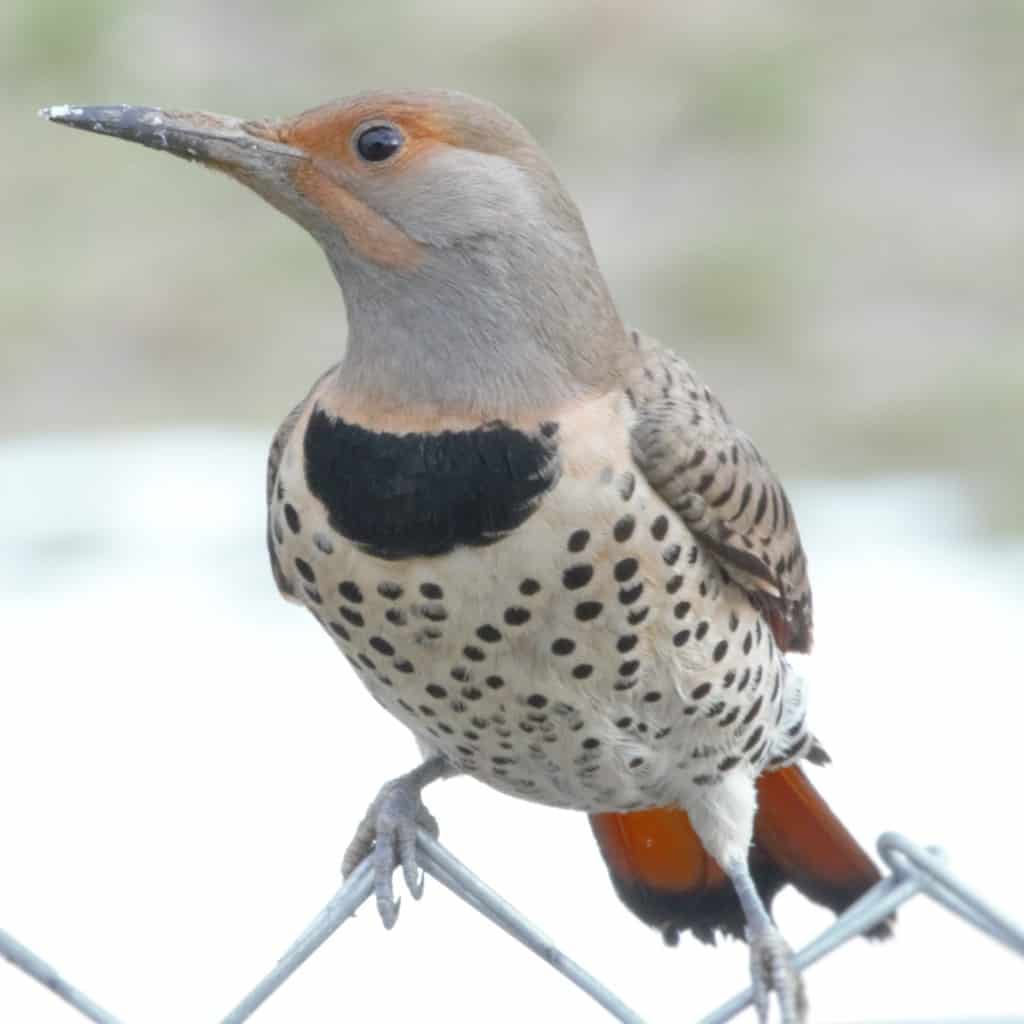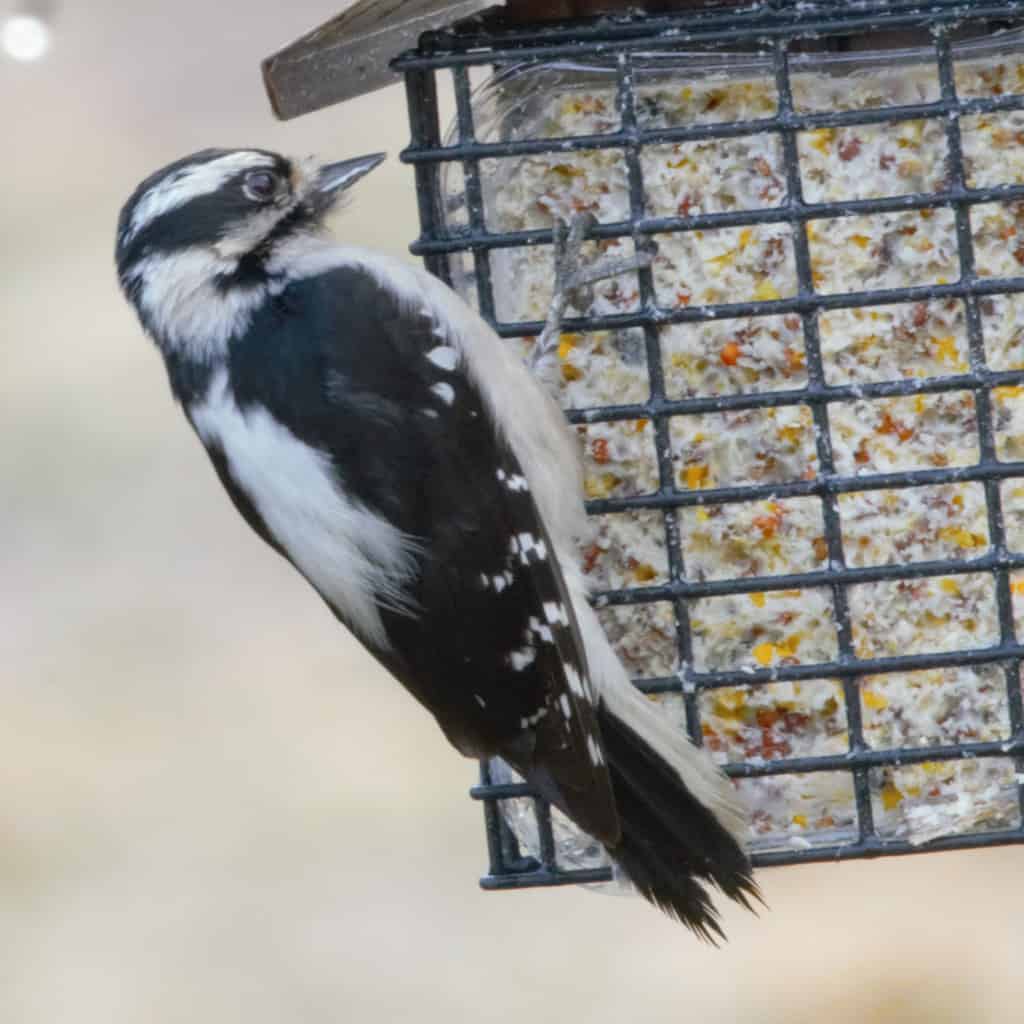Northern California is the ideal habitat for many species of woodpeckers, and below are just a few. There are actually 22 species in 5 genera. The woodpecker family name is “Picidae.”
All woodpeckers have strong feet so that they may climb and cling to tree trunks and they use their stiff tail feathers as props. Their beaks are strong and chisel-like so that they can uncover insects and larvae.
The woodpecker creates a hole, which varies in size depending on the size of the woodpecker, in which they roost and nest.

Acorn Woodpeckers (Melanerpes formicivorus)
It is obvious why they are named “Acorn Woodpeckers” because they harvest acorns and nuts and store them for emergency provisions; their preferred meal includes flying insects. They nest in colonies and will lay up to 5 white eggs in their excavated tree hole. Their habitat is mainly the west coast from Oregon to Texas.

Pileated Woodpeckers (Dryocopus pileatus)
The Pileated Woodpecker is quite large in size, approximately 17” in length, making it the largest woodpecker in North America! They will excavate a fist-sized hole in a tree or roots while it uses it’s sticky tongue to dine on it’s favorite food the Carpenter Ant. Usually found in mature forests, they lay 4 white eggs.

Northern Flicker (Colaptes auratus)
There are actually 3 types of Flickers; “Gilded Flicker,” “Yellow-shafted,” and the “Red-shafted” which is the most com- mon in our area. They are fast ying and skiddish which makes them very hard to photograph. Their diets consist mainly of insects and berries. They lay up to 8 white eggs in a tree cavity, utility pole, or birdhouse.

Downy Woodpecker (Picoides pubescens)
The smallest woodpecker! They are very common across the United States, into Canada and Alaska. They are much more easily spotted in the winter as they come to the suburbs to feed on suet. Interestingly, as the male is larger than the female he has a larger bill that chisels deep in to wood, while the female pries under the bark with her shorter bill. Thus they are able to share the food resources without competing with one another.

Lewis’ Woodpecker (Melanerpes lewis)
Sometimes commonly called the “Crow Woodpecker” because of it’s darker color, large size, and slow flight. The Lewis’ is different from other woodpeckers because it does not peck at wood for it’s food; it typically catches insects and stores acorns and nuts. You can spot the Lewis’ in the top of a tree or on a fence post. Nesting in colonies, they will lay their 8 white eggs in a cavity at considerable height.







